Exploring Innovative Methods to Make Math Enjoyable for Kindergarten Students
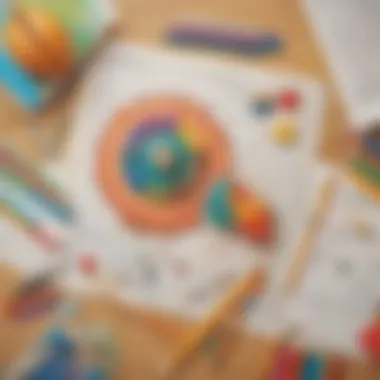
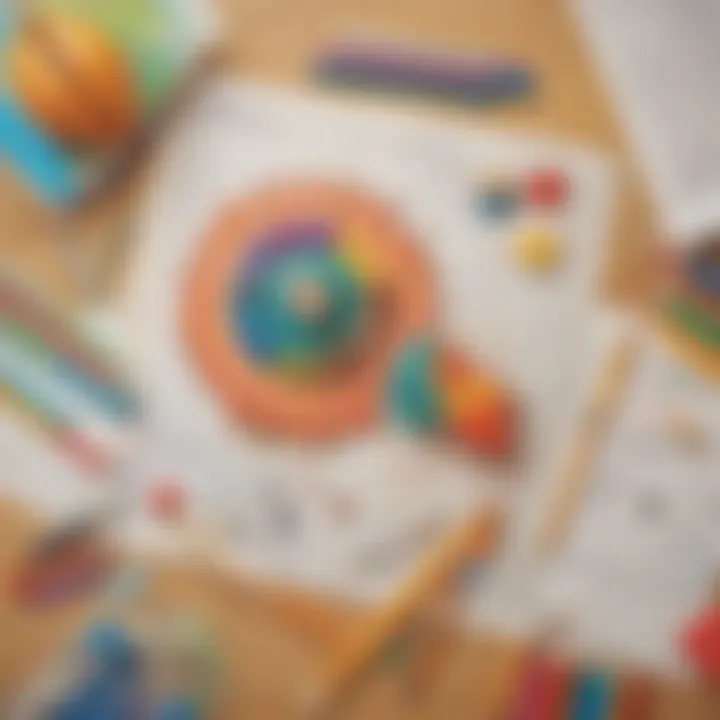
Creative Activities
In our quest to make math enjoyable for kindergarten students, we delve into a realm of creativity and innovation. By intertwining art and arithmetic, we can spark curiosity and enthusiasm in young minds. Let's explore a myriad of craft ideas tailored to the budding mathematicians. From geometric shape collages to number line bookmarks, these hands-on projects promise to elevate learning into a playful adventure.
Craft Ideas
One enchanting activity involves creating 'Math Magic Wands' by decorating wooden sticks with colorful numbers and symbols. This not only enhances fine motor skills but also reinforces number recognition. Moreover, the 'Count and Sort Snack Cups' activity introduces basic counting principles through the fun of organizing snacks into different groups based on quantity or type.
Step-by-Step Guides
To ensure seamless execution, detailed step-by-step guides accompany each craft idea. Parents and educators can follow these instructions effortlessly, guaranteeing a smooth and enjoyable experience for both facilitators and young learners. These guides encompass necessary materials, setup instructions, and tips for maximizing educational value.
Educational Value
Beyond the joy of creation, each craft activity holds substantial educational merit. Through engaging in these projects, children develop essential cognitive skills such as critical thinking, problem-solving, and spatial awareness. By intertwining creativity with mathematical concepts, students not only grasp theoretical knowledge but also apply it in a tangible, practical manner, fostering a holistic understanding of math from an early age.
Fun Quizzes
Transitioning from creativity to cognition, we introduce the realm of fun quizzes designed to stimulate young brains while consolidating mathematical principles. These interactive challenges offer a dynamic approach to learning, blending entertainment with education to forge a lasting appreciation for math.
Quiz Topics
Our collection of quizzes spans a diverse array of topics, ranging from basic number operations to shape recognition and pattern sequencing. Each quiz is meticulously crafted to align with kindergarten curriculum standards while infusing elements of fun and discovery.
Question Types
In our quest to engage young learners, we employ various question types that cater to different learning styles and preferences. From multiple-choice inquiries to visual puzzles and hands-on tasks, these diverse formats ensure that every child finds an interactive path to mathematical understanding.
Knowledge Reinforcement
Beyond mere assessment, these quizzes serve as powerful tools for reinforcing learning. By revisiting key concepts in a fun and challenging context, children solidify their understanding and retention of mathematical principles. The element of gamification further motivates them to actively participate and excel in their mathematical journey.
Fact-Based Articles
Venturing into the realm of informative enrichment, our fact-based articles aim to broaden young minds by presenting math-related topics in an engaging and accessible format. In this digital age, where information overload is prevalent, these articles serve as beacons of clarity and enlightenment, guiding young learners towards a deeper understanding of the mathematical world.
Topics
Our expansive treasury of articles covers a wide spectrum of mathematical subjects, from the wonders of geometry to the intrigue of number theory. Each topic is thoughtfully curated to capture children's interest and spark inquisitiveness, laying the foundation for a lifelong love of learning.
Engaging Content
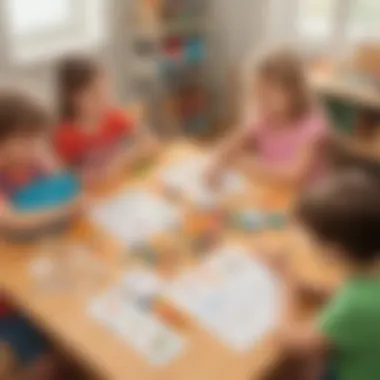
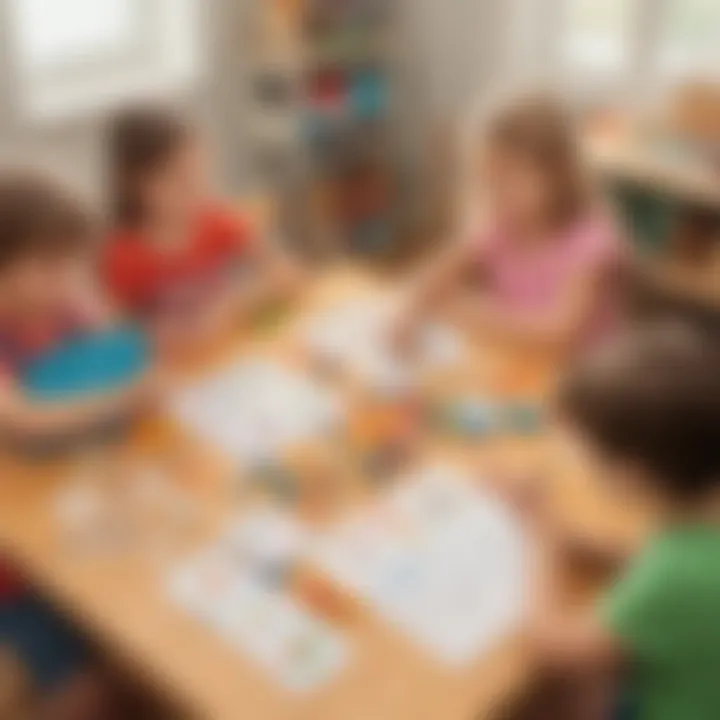
At the heart of our articles lies a commitment to delivering content that is not only informative but also captivating. Through vivid illustrations, relatable examples, and playful narratives, we strive to demystify complex mathematical concepts and make them accessible to even the most novice of learners.
Introduction
Mathematics forms the bedrock of critical thinking, problem-solving, and logical reasoning - essential skills that are honed from a tender age. This section delves deep into the realm of kindergarteners, elucidating the significance of making math an enjoyable pursuit. By instilling a sense of joy and curiosity in mathematical concepts early on, educators and parents pave the way for a lifelong love for numbers. This discourse will shed light on the specific elements that contribute to transforming math into a vibrant learning experience, the benefits that accrue from fostering a positive math environment, as well as the considerations that must be taken into account while crafting engaging math activities for young minds.
Importance of Making Math Fun
In the landscape of early childhood education, the crucial role of making math a fun and captivating subject cannot be overstated. Young learners are at a developmental stage where their perceptions of various subjects, including math, are being molded - their engagement with numbers during these formative years can deeply impact their future attitudes towards the subject. By infusing playfulness and excitement into mathematical explorations, educators not only enhance children's enjoyment of learning but also lay a sturdy foundation for advanced math skills to flourish. Through interactive games, hands-on activities, and creative challenges, young minds can not only comprehend mathematical concepts but also retain them better, fostering a positive trajectory in their academic journey.
Overview of Kindergarten Math Curriculum
Kindergarten math curriculum acts as the gateway to a child's numerical literacy. At this stage, children are introduced to fundamental mathematical concepts that form the scaffolding for future learning. From grasping basic numeracy skills to understanding patterns and shapes, the kindergarten math curriculum sets the stage for a child's mathematical odyssey. By exploring the strands of number sense, geometry, measurement, and spatial awareness, young learners embark on a journey of discovery, unlocking the mysteries of the mathematical world around them. This section will illuminate the key components of the kindergarten math curriculum, offering insights into the progression of skills and knowledge that children assimilate during this critical phase of their academic development.
Incorporating Playful Activities
In this section, we delve into the importance of incorporating playful activities to enrich the learning experience of kindergarten students. By infusing elements of fun and engagement into math education, children can develop a positive attitude towards the subject from an early age. Playful activities help create an interactive and stimulating environment that nurtures curiosity and critical thinking. By making math enjoyable through games and hands-on experiences, educators can lay a strong foundation for a lifelong appreciation of mathematics. Considerations when incorporating playful activities include aligning activities with learning objectives, ensuring accessibility to diverse learners, and promoting collaborative learning opportunities.
Interactive Math Games
Interactive math games provide a dynamic platform for kindergarten students to explore mathematical concepts in a fun and interactive manner. These games not only reinforce key math skills but also enhance cognitive development and problem-solving abilities. By engaging in interactive math games, children can improve their numerical competency while enjoying the learning process.
Math Bingo
Math Bingo offers a unique approach to reinforcing arithmetic skills in kindergarten students. This game combines traditional bingo mechanics with mathematical equations, allowing children to practice mental math in an entertaining way. The key characteristic of Math Bingo lies in its ability to make learning engaging and competitive, fostering a spirit of friendly competition among young learners. The interactive nature of Math Bingo encourages active participation and quick thinking, making it a popular choice for enhancing mathematical proficiency in a playful setting.
Number Puzzles
Number puzzles present kindergarten students with a challenging yet rewarding avenue to develop number sense and problem-solving skills. These puzzles require children to manipulate numbers and patterns to arrive at a solution, promoting logical reasoning and critical thinking. The key characteristic of number puzzles is their ability to engage students in a brain-teasing activity that simultaneously enhances mathematical fluency. Despite the initial challenges, number puzzles offer a stimulating way to boost cognitive abilities and numerical comprehension among young learners.
Shape Sorting
Shape sorting activities introduce kindergarten students to geometric concepts through hands-on exploration. By arranging shapes based on attributes such as size, color, and shape, children develop spatial awareness and geometric understanding. The key characteristic of shape sorting lies in its capacity to make abstract mathematical concepts tangible and interactive, fostering a deeper comprehension of spatial relationships. While promoting fine motor skills and visual discrimination, shape sorting activities offer a multi-sensory approach to learning geometry in a playful and engaging manner.
Math Manipulatives and Toys
Math manipulatives and toys play a vital role in enhancing the hands-on learning experience of kindergarten students. These physical objects allow children to manipulate and visualize mathematical concepts, aiding in the concrete understanding of abstract ideas. Incorporating math manipulatives and toys into math education stimulates creativity and exploration while solidifying mathematical concepts.
Counting Bears
Counting bears serve as versatile tools for developing counting skills and arithmetic proficiency in kindergarten students. These colorful bear counters engage children in hands-on counting activities, helping them grasp numerical concepts through tactile manipulation. The key characteristic of counting bears is their interactive nature, which enables students to physically represent and visualize mathematical operations. While promoting numerical fluency and one-to-one correspondence, counting bears foster a kinesthetic learning approach that caters to varied learning styles.
Pattern Blocks


Pattern blocks offer a versatile resource for exploring geometric patterns and spatial relationships in a visual and tactile manner. These geometric shapes allow kindergarten students to create and replicate patterns, fostering a deeper understanding of symmetry and spatial concepts. The key characteristic of pattern blocks lies in their ability to promote spatial reasoning and creative thinking through hands-on manipulation. By engaging in pattern block activities, children develop a keen eye for geometric patterns while honing their problem-solving skills in a dynamic and interactive environment.
Math Cubes
Math cubes provide kindergarten students with three-dimensional tools to explore mathematical concepts such as volume, shape, and spatial relationships. These cubes enable children to build and manipulate geometric structures, enhancing their understanding of mathematical principles through hands-on experimentation. The key characteristic of math cubes is their versatility in representing mathematical ideas in a tangible and visual way, allowing students to visually comprehend abstract concepts. By engaging with math cubes, children develop spatial intelligence and problem-solving skills while enjoying a creative approach to exploring mathematical concepts.
Utilizing Realistic Scenarios
In the voyage to make math exciting for kindergarten students, one indispensable method is to incorporate real-life scenarios. By immersing young minds in everyday situations where math is alive and practical, educators and parents can instill a deeper understanding and appreciation for numerical concepts. In the realm of kindergarten education, connecting math to the real world becomes paramount. By bridging the classroom with the outside environment, children can grasp the relevance and utility of mathematical skills beyond academic exercises. Embracing real-life scenarios not only makes learning engaging but also fosters a seamless transition from theoretical knowledge to practical application.
Grocery Store Math
In the exciting realm of mathematical exploration for kindergarteners, Grocery Store Math stands out as a practical and engaging learning experience. From counting colorful fruits to weighing vegetables, the grocery store becomes a multifaceted playground for numerical discovery. Engaging in Grocery Store Math allows young learners to apply basic math skills in a real-world setting, enhancing their understanding of numbers, quantities, and even budgeting concepts. Through interactive activities like calculating prices, comparing sizes, and understanding measurements, children develop crucial mathematical foundations while honing their decision-making skills in a practical context.
Cooking and Baking Math
Delving into the culinary world, Cooking and Baking Math presents itself as a delectable opportunity for kindergarteners to explore math in action. From measuring ingredients to following recipes, children embark on a flavorful journey that integrates numerical concepts with culinary creativity. Through hands-on experiences in the kitchen, young learners not only enhance their math skills but also gain valuable life skills such as sequencing, problem-solving, and patience. Cooking and Baking Math enable children to see how math intertwines with daily activities, laying a savory foundation for mathematical proficiency and nurturing a lifelong appreciation for the culinary arts.
Incorporating Technology
Incorporation technology plays a pivotal role in revolutionizing educational methods, especially in the context of making math enjoyable for kindergarten students. By integrating technology into the learning process, educators can enhance engagement, stimulate curiosity, and cater to diverse learning styles. It provides a dynamic platform for interactive learning experiences, transforming traditional math lessons into captivating ventures.
Educational Math Apps
Mathseeds
Mathseeds offers a versatile approach to learning math, focusing on foundational concepts while enveloping children in a virtual world of exploration. Its visually appealing interface and gamified structure make it a sought-after choice for this article. The adaptive nature of Mathseeds ensures personalized learning journeys for students, tailoring challenges to individual proficiencies. However, occasional technical glitches can hinder seamless navigation but are outweighed by the platform's effectiveness in fostering math comprehension.
Prodigy
Prodigy reshapes math education through its immersive gameplay and curriculum alignment. With adaptive quizzes and engaging quests, Prodigy motivates students to develop math skills while reinforcing key concepts. The platform's intuitive design and comprehensive coverage of topics position it as a preferred tool for educators seeking to enrich mathematical understanding. Despite occasional connectivity issues during peak usage times, Prodigy's benefits in enhancing learning outcomes remain prominent.
SplashLearn
SplashLearn stands out for its blend of educational content and interactive challenges, promoting holistic mathematical growth in young learners. Its emphasis on skill progression and conceptual clarity contributes significantly to this article's goal of making math enjoyable. The platform's user-friendly interface and extensive question bank cater to varied learning needs. While occasional lag in loading times may impede seamless use, SplashLearn's educational effectiveness and engaging features outweigh such minor setbacks.
Online Math Resources
Virtual Math Manipulatives
Virtual Math Manipulatives provide a hands-on approach to mathematical concepts, offering a digital representation of physical learning aids. By simulating real-world manipulatives in a virtual space, students can interact with mathematical objects dynamically, enhancing comprehension and retention. Their adaptability and versatility make them an ideal choice for educators aiming to bridge the gap between abstract ideas and practical application. However, limitations in tactile feedback may slightly diminish the overall learning experience.
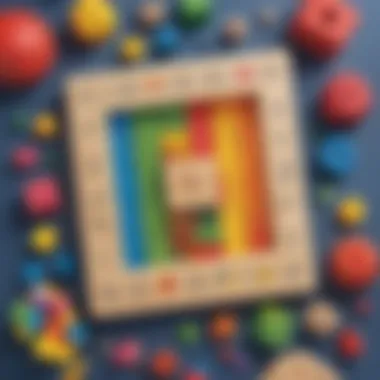
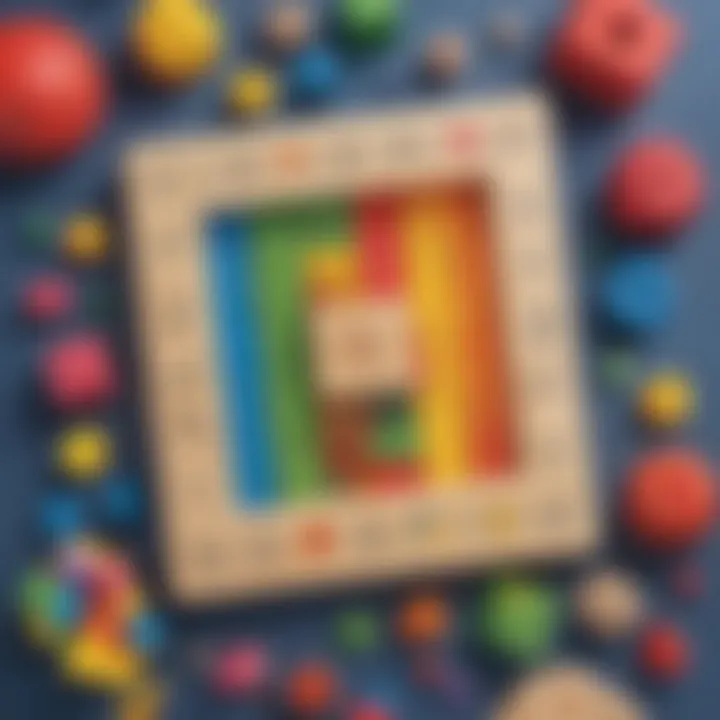
Interactive Math Websites
Interactive Math Websites blend informative content with interactive elements, fostering an engaging environment for math exploration. Through interactive simulations and exercises, these websites cater to visual and kinesthetic learners, promoting active participation and conceptual understanding. Their extensive resources and practice opportunities make them invaluable tools for supplementing classroom instruction. Despite occasional complexity in navigation and content organization, the benefits of Interactive Math Websites in enriching math education are substantial.
Encouraging Math Exploration
Introduction
Math is a fundamental skill that is crucial for children's academic success. Encouraging math exploration in kindergarten not only cultivates a love for numbers but also nurtures problem-solving abilities and critical thinking from a young age. By incorporating diverse approaches to learning, educators and parents can ignite a passion for mathematics that transcends the classroom.
Importance of Encouraging Math Exploration
Math exploration goes beyond rote memorization; it involves actively engaging children in discovering mathematical concepts in everyday life. By encouraging math exploration, children can develop a deeper understanding of numerical relationships, spatial reasoning, and logical thinking. This hands-on approach instills a curiosity that propels them to seek out math in their surroundings and promotes continuous learning.
Benefits of Math Exploration
Math exploration enhances children's cognitive development by fostering creativity and innovation. It encourages them to experiment with solutions, make connections between ideas, and persevere through challenges. Outdoor math activities and scavenger hunts, specifically, promote collaboration, communication, and critical reasoning skills while making learning enjoyable and memorable.
Considerations for Encouraging Math Exploration
When facilitating math exploration, it is essential to create a safe and supportive environment where children feel encouraged to take risks and make mistakes. Providing varied materials such as counting manipulatives, measuring tools, and shapes can stimulate different learning styles and cater to diverse interests. Additionally, fostering a growth mindset towards math helps children view errors as opportunities for growth, building resilience and self-confidence in mathematical abilities.
Outdoor Math Activities
Introduction
Engaging in outdoor math activities offers children a unique opportunity to apply mathematical concepts in real-life settings. From measuring the height of a tree to calculating the distance covered during a nature walk, the outdoors become a dynamic classroom where math comes to life. By connecting mathematics to the natural world, children develop a practical understanding of its applications.
Types of Outdoor Math Activities
Outdoor math activities can range from simple counting exercises with rocks to more complex geometry tasks using shadows and angles. Nature provides a rich landscape for exploring patterns, symmetry, and spatial relationships. Through activities like measuring tree circumferences or estimating the number of petals on a flower, children engage with math authentically and meaningfully.
Educational Value of Outdoor Math Activities
Participating in outdoor math activities not only deepens children's math comprehension but also enhances their overall well-being. Being in nature stimulates mental acuity, boosts creativity, and promotes physical activity, contributing to a holistic learning experience. Moreover, the outdoor setting encourages sensory exploration and observation, fostering a multi-dimensional approach to mathematical understanding.
Math Scavenger Hunts
Introduction
Math scavenger hunts are an exciting way to combine problem-solving skills with the thrill of discovery. By creating engaging scavenger hunt tasks that require mathematical reasoning and critical thinking, children sharpen their cognitive abilities while having fun. These hunts can be tailored to various mathematical concepts, making them adaptable to different skill levels and learning objectives.
Designing Math Scavenger Hunts
When designing math scavenger hunts, it is important to align the tasks with the children's current math knowledge and abilities. Tasks can include finding and counting specific objects, measuring distances, or solving simple equations. By incorporating elements of teamwork and competition, scavenger hunts not only reinforce math concepts but also promote social skills and collaboration among participants.
Benefits of Math Scavenger Hunts
Math scavenger hunts encourage children to apply math in real-world contexts, fostering a practical understanding of its relevance. They help improve problem-solving and critical thinking skills as children navigate challenges and decode clues. Additionally, these interactive hunts promote a sense of accomplishment and curiosity, making math enjoyable and encouraging continued exploration.







